Exploring Pyrgi: The Chios Village with Painted Walls
Discover Pyrgi in Chios, a medieval...
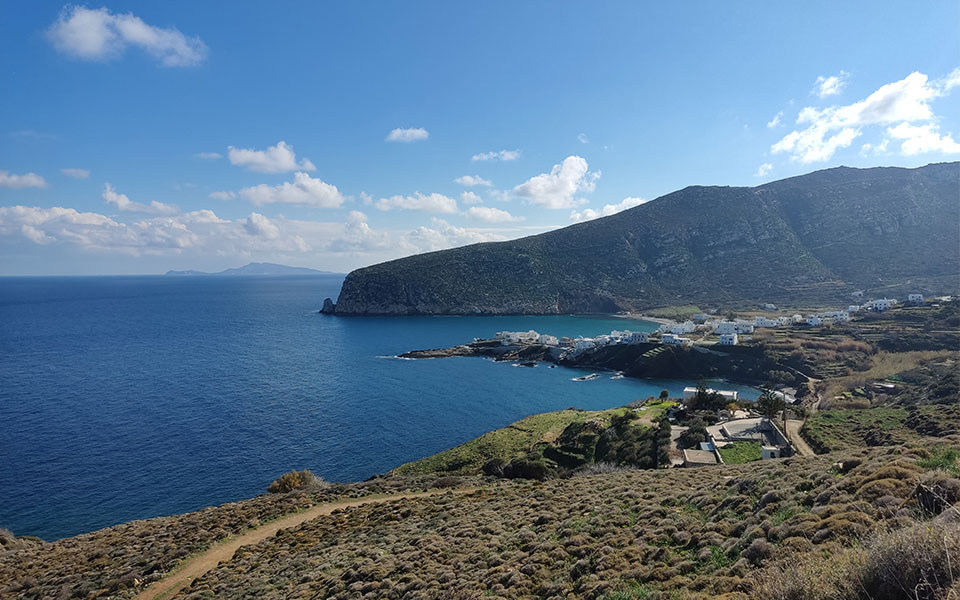
The seaside village of Apollonas, in the north of Naxos.
© Eleftheria Alavanou
It’s early on a Saturday morning in mid-January, and passengers are dragging their suitcases along the docks of Piraeus, moving towards the ships they will be traveling on. Cars and trucks, their lights still on, are lined up, waiting to drive onto ferries. Two or three employees are serving passengers from the company kiosks on the waterfront. It’s nowhere near as crowded as it is in summer, although it’s still lively, and the weather is mild and pleasant. We board our vessel, and the ship, almost full, leaves for Paros, Naxos, Ios and Santorini. Who are all these people and why are they traveling to these islands now, two weeks after the holidays? Are they islanders? “They probably are,” says an employee behind the counter at one of the ship’s snack bars. “Or they’re seasonal workers who want to land a job for the upcoming tourist season.”
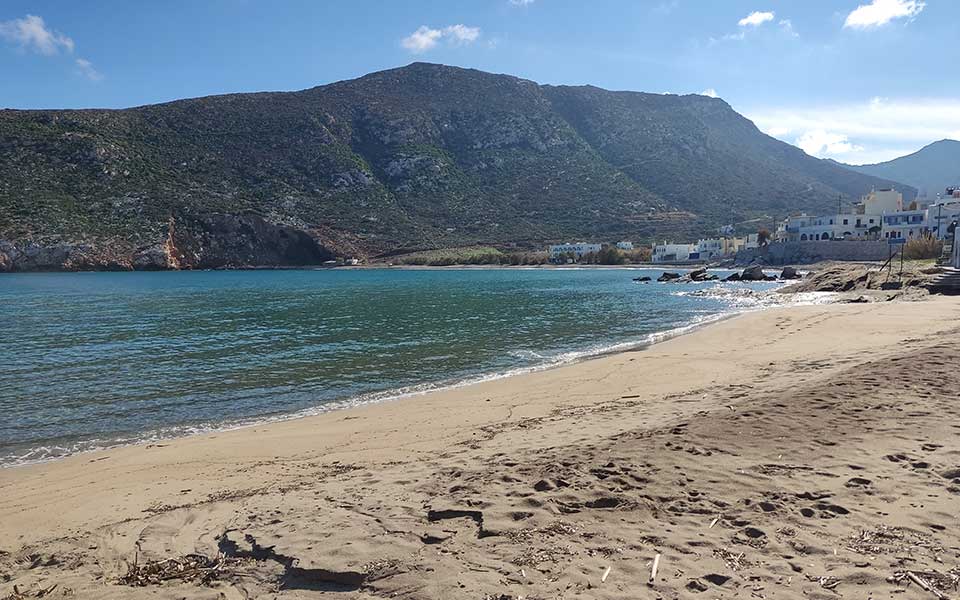
The beach at Apollonas, mid-January.
© Eleftheria Alavanou
Around us, we spot some passengers sleeping on the stairs, while others, economy-class tickets in their pockets, pounce on empty first-class seats. In the lounge, it’s warm but people are fidgeting and not quite as comfortable in their seats as they would like, while out on the deck, even though it’s colder, people seem to be in a better mood. Drowsy travelers stay awake by watching videos on their cell phones, while others turn on the speakerphone feature as they make video calls. Families with young children seem to cope with this early departure better, quietly playing board games without disturbing those around them.
The ship arrives in Naxos early in the afternoon. We disembark on this bright Cyclades island which, unlike so many others, doesn’t fall into a winter slumber; even now in mid-January, it’s lively. The municipality of Naxos and the Lesser Cyclades, the area formed by the island of Naxos and its smaller dependencies, has 19,812 permanent residents, most of whom live on the main island. Naxos has a hospital, banks and public services. It even has a press distribution agency, and the Sunday papers arrive from the mainland on the same day they hit the newsstands everywhere else, so you can enjoy them with your morning coffee by the sea. The island has restaurants as notable as those in Athens and plenty of nightlife. At eleven on a weekend evening, bands are still performing sound checks at the bars, as if they want to stretch out the night as much as possible. Waiting for that first set to start, you can have a drink and gaze out at the port lights and the dark blue sea beyond them. It’s a treat for the eyes.
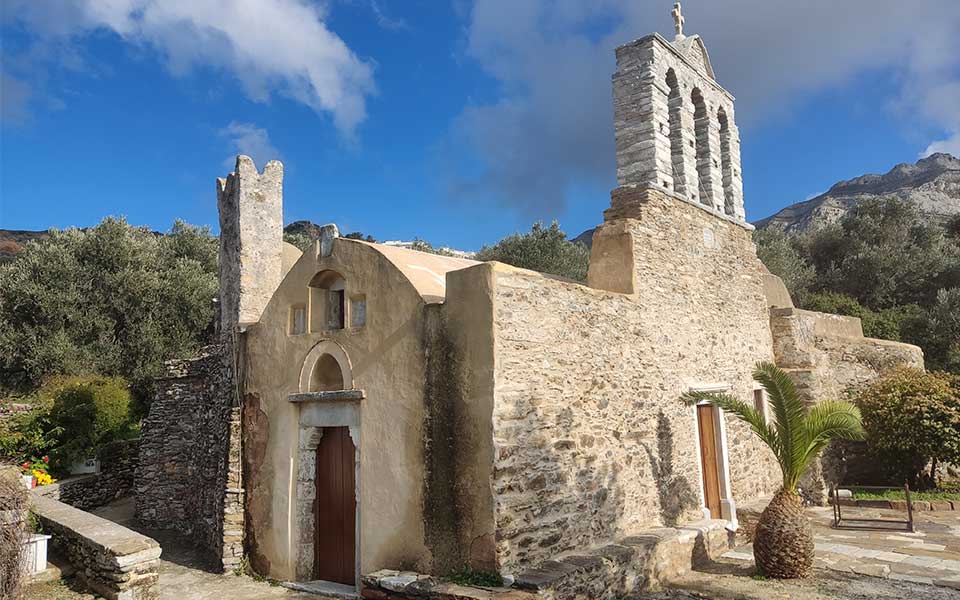
The early Christian church complex of Panaghia Drosiani.
© Eleftheria Alavanou
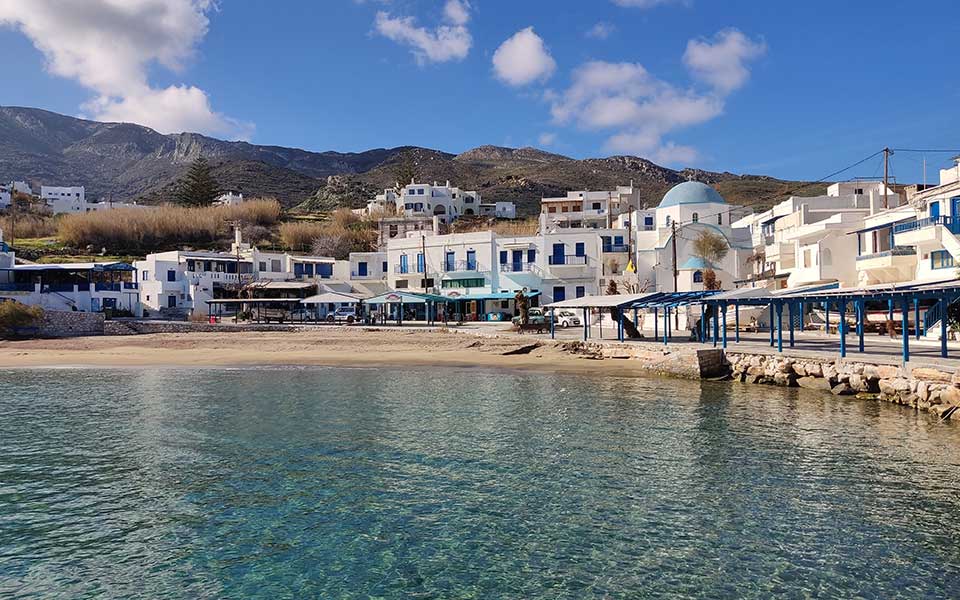
A view of Apollonas.
© Eleftheria Alavanou
Outside the city and the port, the countryside of Naxos awaits: Naxos of the potato growers, the livestock breeders and the day-trippers. The road from Ηora to the village of Apollonas in the north is full of turns; to cover a distance of 37km, it takes about an hour. The island is verdant, and today, with clear skies, the neighboring island of Paros seems to be just a stone’s throw away. Mykonos, Syros and Tinos are faint shapes on the horizon. The white houses of Apollonas, set off against the bright blue of the sea, sparkle in the sunlight as if it were June. A café, normally closed at this time of year, has its door ajar and is serving coffee and tsipouro (a pomace brandy) to some locals. Not only are they not bothered that their village is quiet in winter, they explain that this helps them regain their balance. “Half a year with people, half a year alone” is, they say, the town’s motto.
A little above the village is the Kouros of Apollo, a monumental statue that descriptions do not do justice to, because it is more than important, more than majestic. It’s almost unimaginable that, on an island in the middle of the Aegean, at a spot next to a touristic seaside village, a supine statue 10 meters long and weighing 80 tons has survived for 27 centuries, in the very same ancient quarry where it was originally created. The Kouros of Apollo (along with the other two ancient Kouroi of Naxos, located in Flerio) is a sight that everyone should see at least once. It is a monument of immense value, because it is located in its natural environment and not in some museum, a fact which helps the viewer better appreciate the culture that developed on the islands during antiquity.
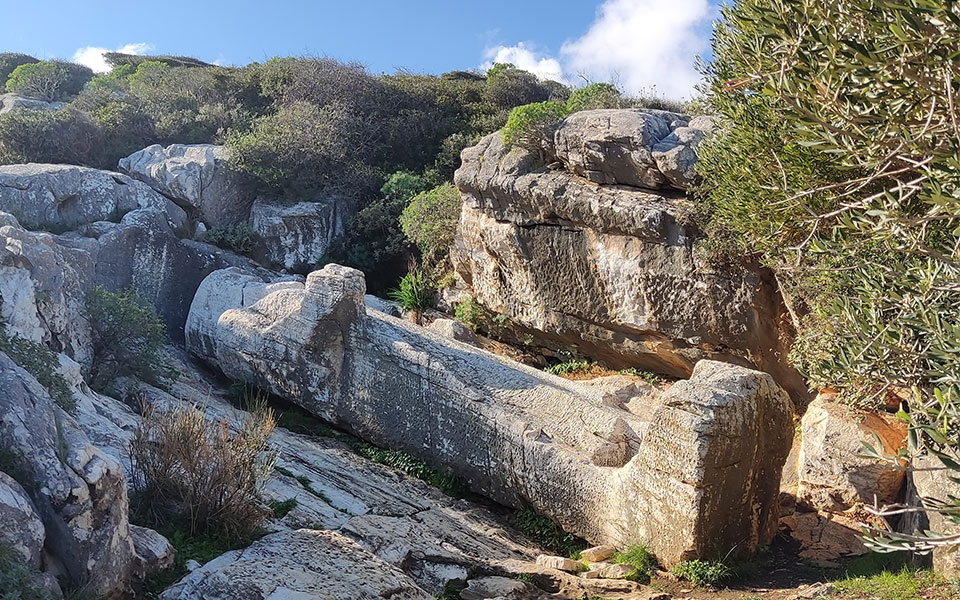
The Kouros of Apollo has lain here for 27 centuries, right in the quarry where it was sculpted.
© Eleftheria Alavanou
Thanks to its geology, history, size and location, Naxos has a great wealth of monuments that belong to different eras and attest to the cultural changes that took place in the Aegean over the centuries. Traveling back from Apollonas to Hora, we follow a different road that crosses the hinterland and skirts Skados, Koronos and Moni. In the middle of the route, literally in the heart of Naxos, is Panaghia Drosiani, a unique early Christian complex of interconnected churches, with the oldest dating from the 6th century AD. It is a rare example of Aegean architecture from the early Christian era that blends harmoniously into the landscape. The original church is complemented by three single-room chapels. Apart from its architecture, Drosiani is also famous for its frescoes, which were created from the 7th to the 14th century in successive layers. The most important one is the double representation of Christ on the dome; Christ is depicted both as a young man with a light beard as a mature man with a full beard.
Leaving Drosiani on the way back to Hora, we make a stop at Aghia Anna, which presents yet another aspect of Naxos. Looking at this beach, with its 4.3-star rating out of 213 reviews on Google Maps, you feel that every grain of sand has been drafted into the battle for tourism. The summer spots have removed all their sunbeds and umbrellas from the beach and yet, even though they’re closed, they make their presence felt. Thatched pergolas, decks, palm trees: everything suggests a perpetual round of shots, served not only on Naxos but on dozens of Greek islands, from spring to autumn, for the sake of which the natural environment, the tranquility and the view have all been sacrificed. Nevertheless, Aghia Anna remains achingly beautiful, with a resplendent sea and a beckoning horizon. This is how our first two-day excursion of 2023 closes, on this charming Cycladic island which – as is natural, due to the season – offers services at cheaper prices than in the summer and which is only five hours away from Athens.
Discover Pyrgi in Chios, a medieval...
With its beautiful olive groves, emerald...
Just an hour from Athens, Kea...
From family traditions to modern innovation,...